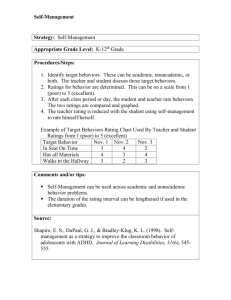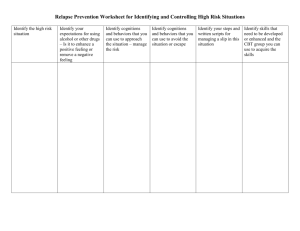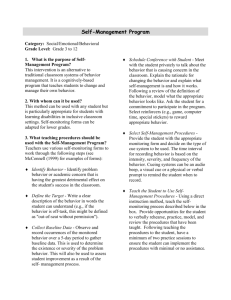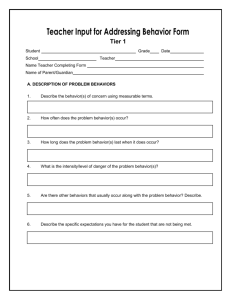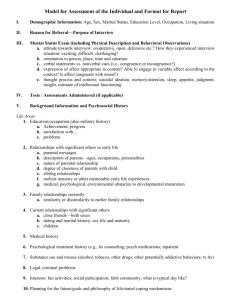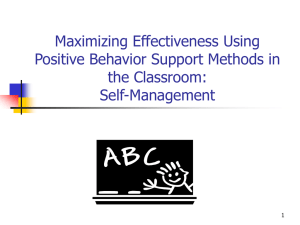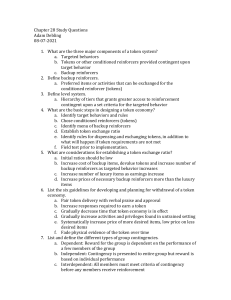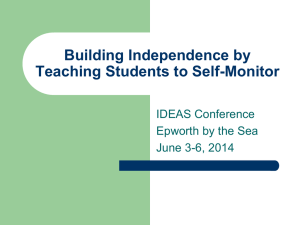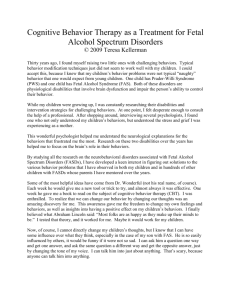Examples of Research Based Behavior Interventions
advertisement
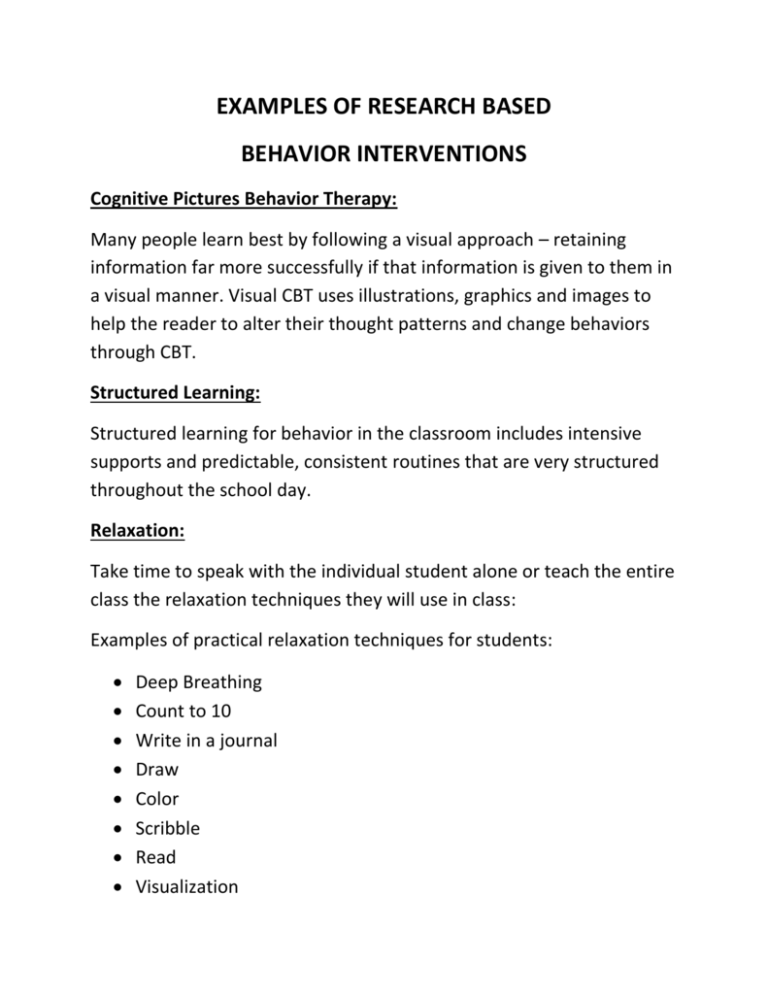
EXAMPLES OF RESEARCH BASED BEHAVIOR INTERVENTIONS Cognitive Pictures Behavior Therapy: Many people learn best by following a visual approach – retaining information far more successfully if that information is given to them in a visual manner. Visual CBT uses illustrations, graphics and images to help the reader to alter their thought patterns and change behaviors through CBT. Structured Learning: Structured learning for behavior in the classroom includes intensive supports and predictable, consistent routines that are very structured throughout the school day. Relaxation: Take time to speak with the individual student alone or teach the entire class the relaxation techniques they will use in class: Examples of practical relaxation techniques for students: Deep Breathing Count to 10 Write in a journal Draw Color Scribble Read Visualization Listen to music or nature sounds Take a break Self Monitoring: Students with behavioral and academic difficulties typically have limited awareness and understanding of their own behavior and its effects on others. Self-monitoring interventions equip students to recognize and keep track of their own behavior. Five Steps in Planning a Self Monitoring Intervention: 1. 2. 3. 4. 5. Identify the target behavior. Select/design a self-monitoring system. Choose reinforcers and how the student will earn them. Teach the student to use the system. Fade the role of the adult in the intervention. Self-Management: When a person uses behavior modification procedures to change his or her own behavior, the process is called self-management. Type of Self-Management Strategies: Goal-Settings and Self-Monitoring Antecedent Manipulations Behavioral Contracting Arranging Reinforcers and Punishers Social Support Self-Instructions and Self-Praise Direct Skills Instruction: Explicitly teach student behavior skills and behavior expectations while providing corrective feedback. Discrete Trial: A one-to-one instructional approach used to teach skills in a planned, controlled, and systematic manner. DTT is used when a learner needs to learn a skill best taught in small repeated steps. Each trial or teaching opportunity has a definite beginning and end, thus the descriptor discrete trial. Within DTT, the use of antecedents and consequences is carefully planned and implemented. Positive praise and/or tangible rewards are used to reinforce desired skills or behaviors. Video Model: Video modeling interventions involve a child watching videotapes of positive examples of adults, peers, or him- or herself engaging in a behavior that is being taught. Social Stories: A social story is a short simple story written from the perspective of the student that provides instruction on positive, appropriate social behaviors Positive behaviors include all behaviors that increase an individual's likelihood of success and satisfaction in school, work, community, recreational activities, and social and family life.
